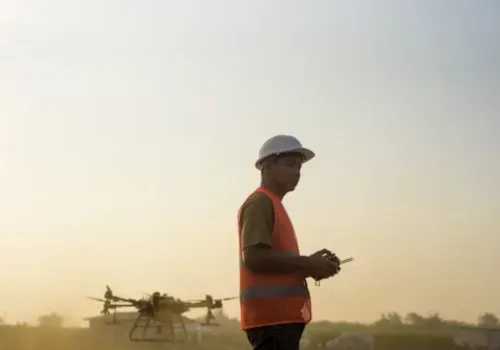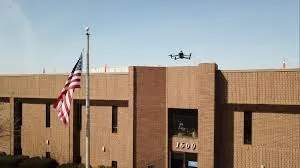
Detroit is using drones and artificial intelligence to pinpoint energy inefficiencies in city buildings, aiming to save money and cut carbon emissions faster than traditional inspection methods allow.
In a new pilot program, drones capture visible and thermal images of municipal buildings, while Lamarr.AI’s platform processes the data to build 3D models and run energy simulations. This helps Detroit’s officials find insulation gaps, water leaks and other structural issues that waste energy.

The initiative is a partnership among Lamarr.AI, tech incubator Michigan Central and startup platform Newlab. The pilot “is a prime example of how public-private collaboration can unlock innovative solutions for cities,” said Tim Slusser, Detroit’s chief mobility officer.
Detroit, along with the Michigan Department of Transportation, Michigan Central and Newlab, created the Advanced Aerial Innovation Region in 2022 to test new drone technologies in real city conditions. The city also set up a transportation innovation zone to ease drone permitting and secured Federal Aviation Administration approvals to fly drones, according to Matt Whitaker, director of mobility innovation platforms at Michigan Central.
For this project, Lamarr.AI teamed up with aerial photographers FlyGuys and drone operations platform Airspace Link. The drones scanned three city-owned buildings and created 3D models paired with energy simulations that identified targeted upgrades which could cut HVAC energy use by up to 22%.
The final reports outline a step-by-step approach for retrofits like weatherizing curtain walls, replacing leaky windows, adding continuous insulation, and improving roofs.
“We are helping the city of Detroit, through the Office of Sustainability specifically, to identify vulnerabilities for cost and climate challenges,” said Lamarr.AI co-founder and CEO Tarek Rakha. “Our AI analyzes and categorizes building deficiencies and uses simulation to clearly state the return on investment once we identify an anomaly or a deficiency.”
Rakha noted that combining drones with Lamarr.AI’s platform is “20 times faster, five to 10 times more affordable and 50% more accurate than [assessing thermal deficiencies by] regular means — including using drones in general because drones can collect data but not analyze it.”
The scalable approach means Detroit could eventually analyze more city buildings in less time. “That makes scaling quite accessible,” Rakha said.
Originally reported by Robyn Griggs Lawrence in Construction Dive.